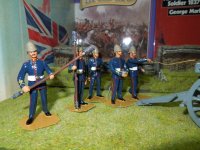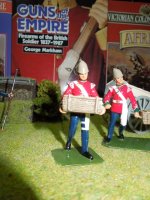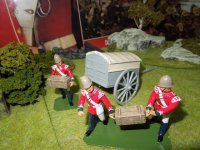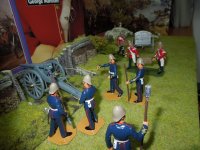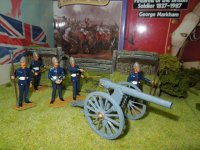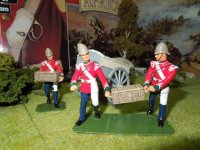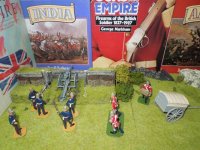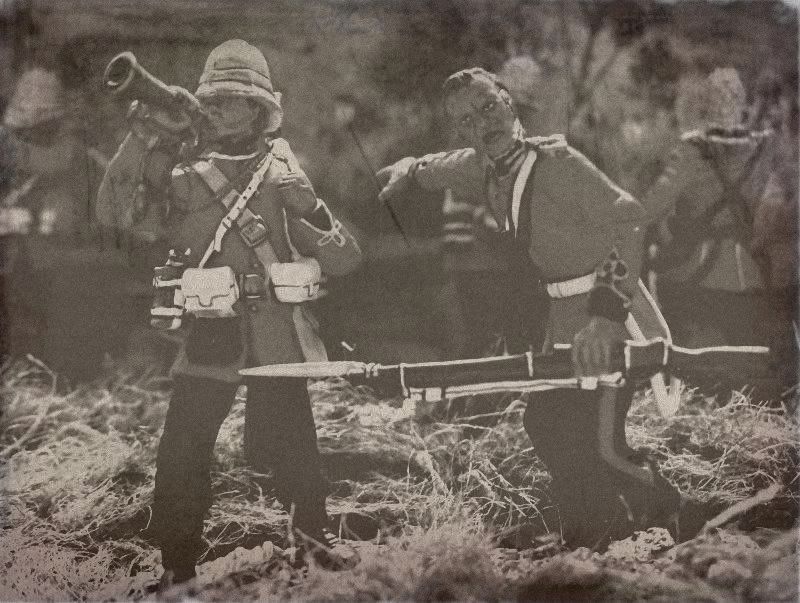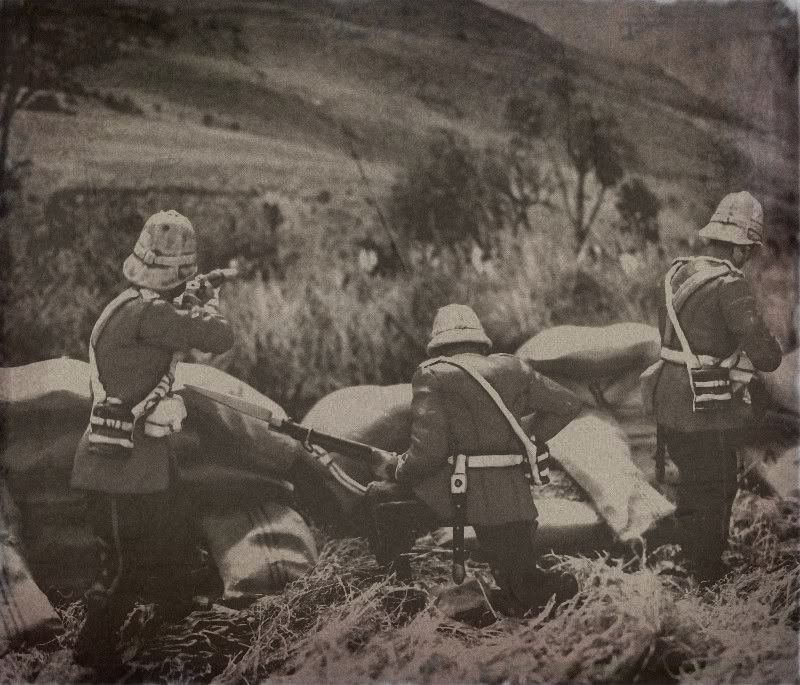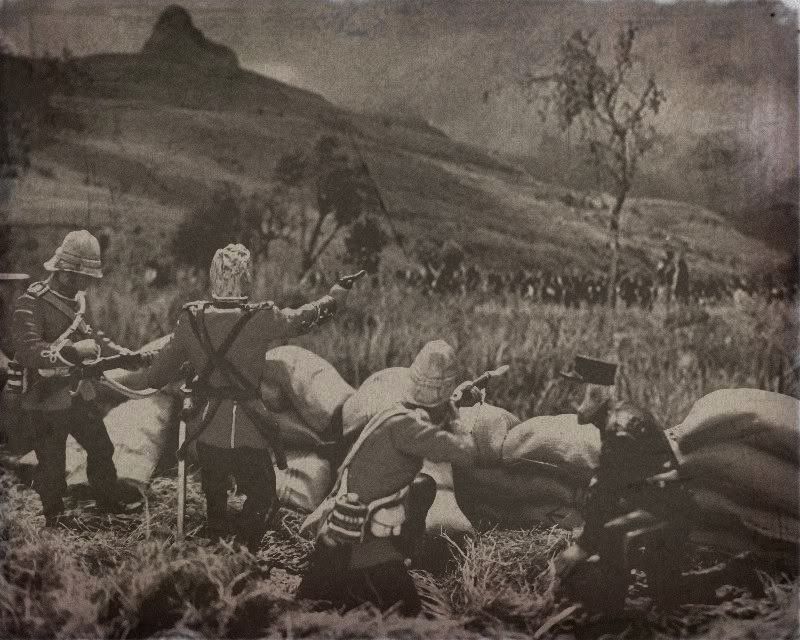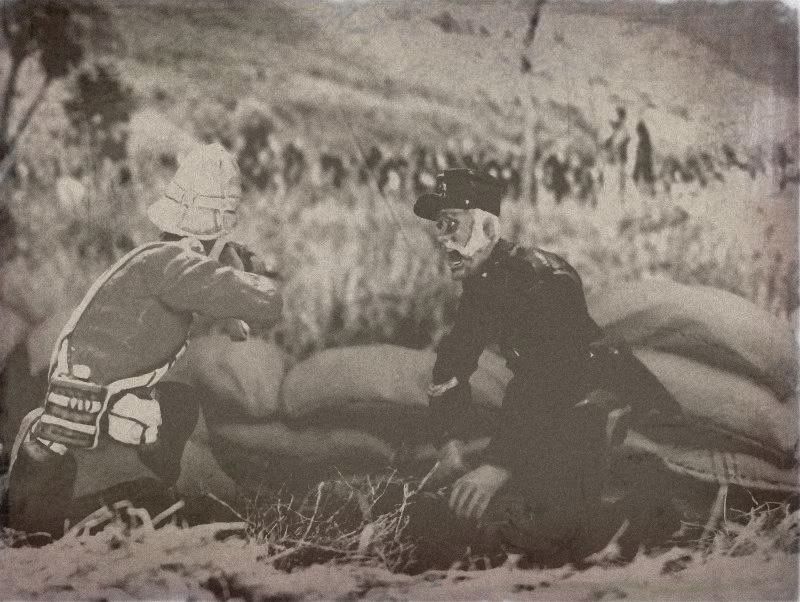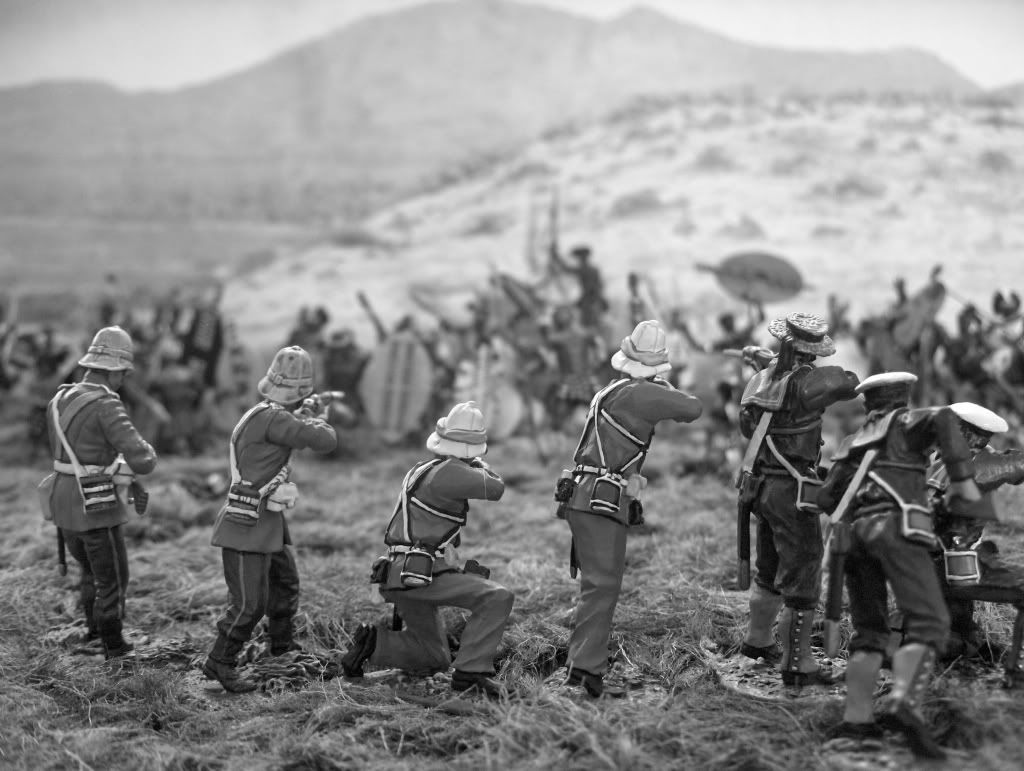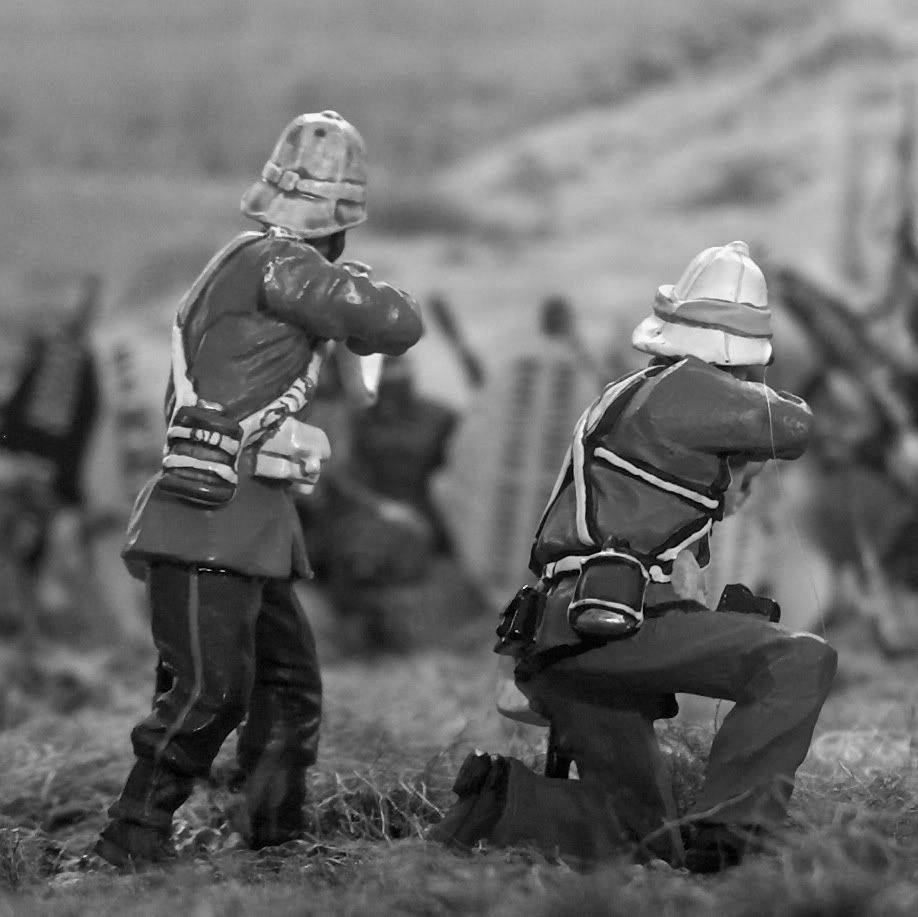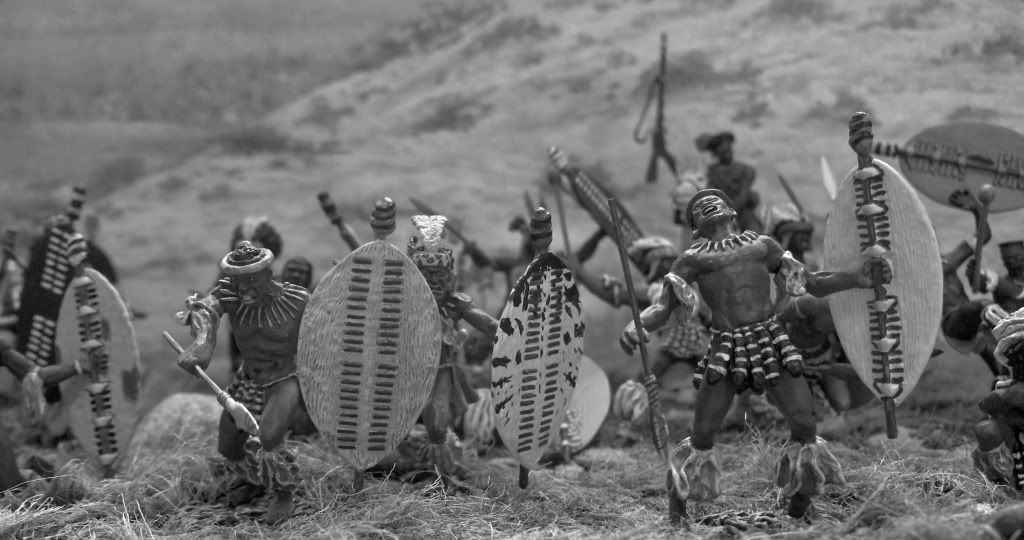The Battle of Gingindlovu April 2nd 1879
At daybreak on 2 April 1879, the morning sun revealed a muddy and sodden ground and a heavy mist. Chelmsford could not move his wagons until the ground dried out, and so sent out the Natal Native Contingent to provoke the Zulus into an attack while he held a strong position. Once the mist lifted, the left horn of the impi was seen advancing eastwards over the river towards the British laager before disappearing into tall grass. A long burst of fire from one of the Gatling guns saw the warriors disappear into the long grass. When the left horn re-emerged it had joined the rest of the impi and the left horn, chest and right horn were advancing over Umisi Hill. The whole charging buffalo formation came in at a run on the three sides of the laager. This was the scenario Chelmsford had planned for, at a range of between 300 and 400 yards (300 to 400 m), the British infantry opened fire, supported by the Gatling guns and rockets. Zulu marksmen caused a few casualties within the laager, but the defenders kept the Zulus at bay and Chelmsford's defence was working. Though the Zulu regiments made persistent rushes to get within stabbing range, their charges lacked the drive and spirit that had pushed them forward at the Battle of Isandlwana and Rorke's Drift. After 20 minutes, the Zulu impi began to crumble away. Seeing this, Chelmsford ordered pursuit by the mounted troops and the native contingent. Large numbers of Zulu warriors were killed in this chase. By 07:30, the Zulus had fled and the grim task of killing Zulu wounded was undertaken.
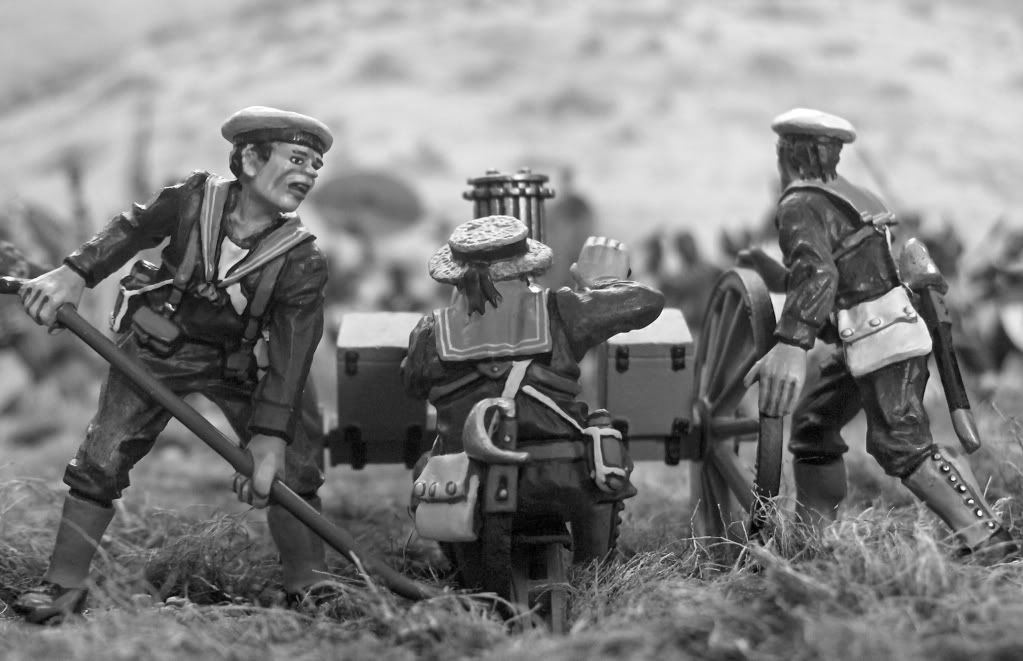


TO BE CONTINUED



